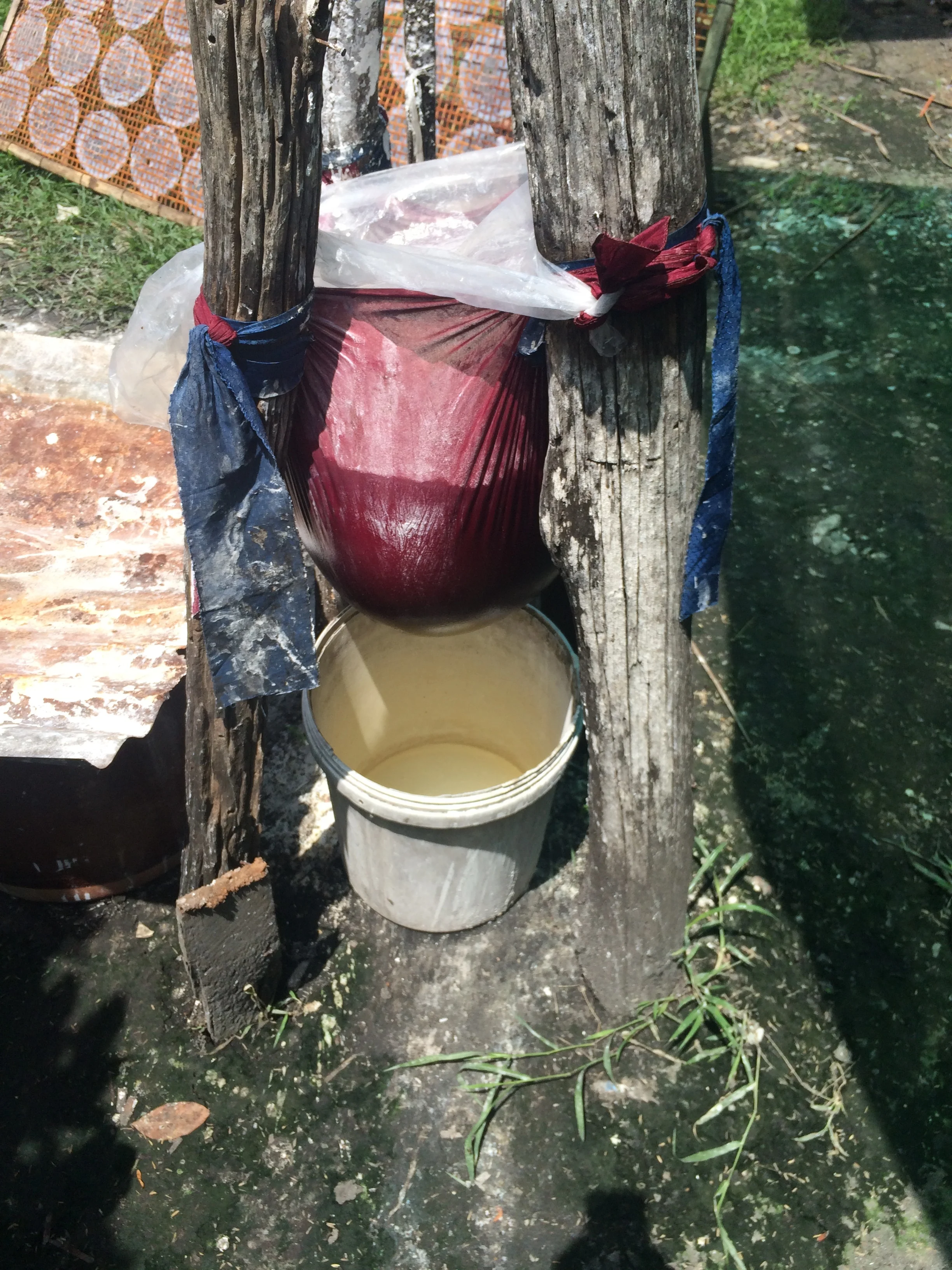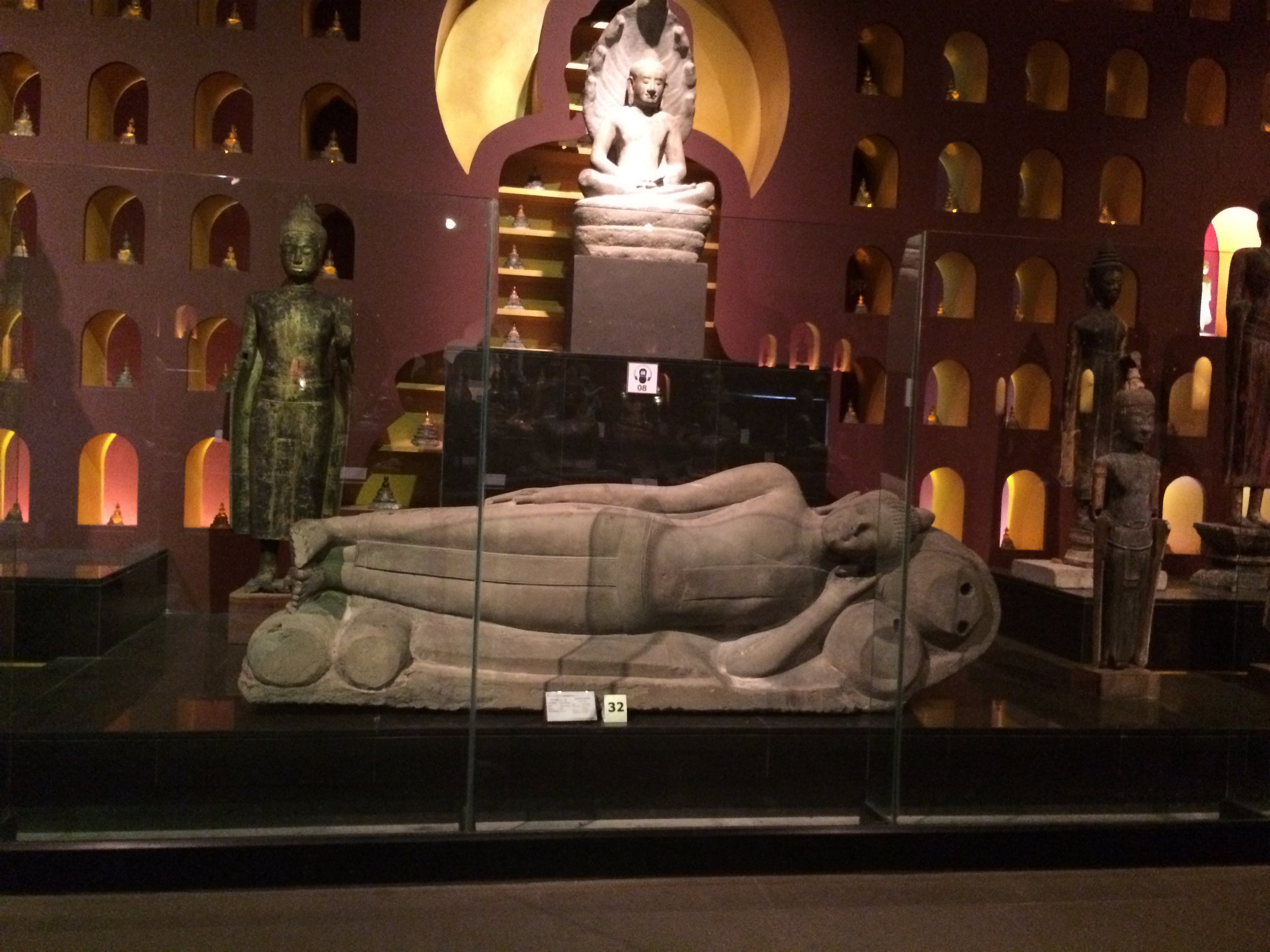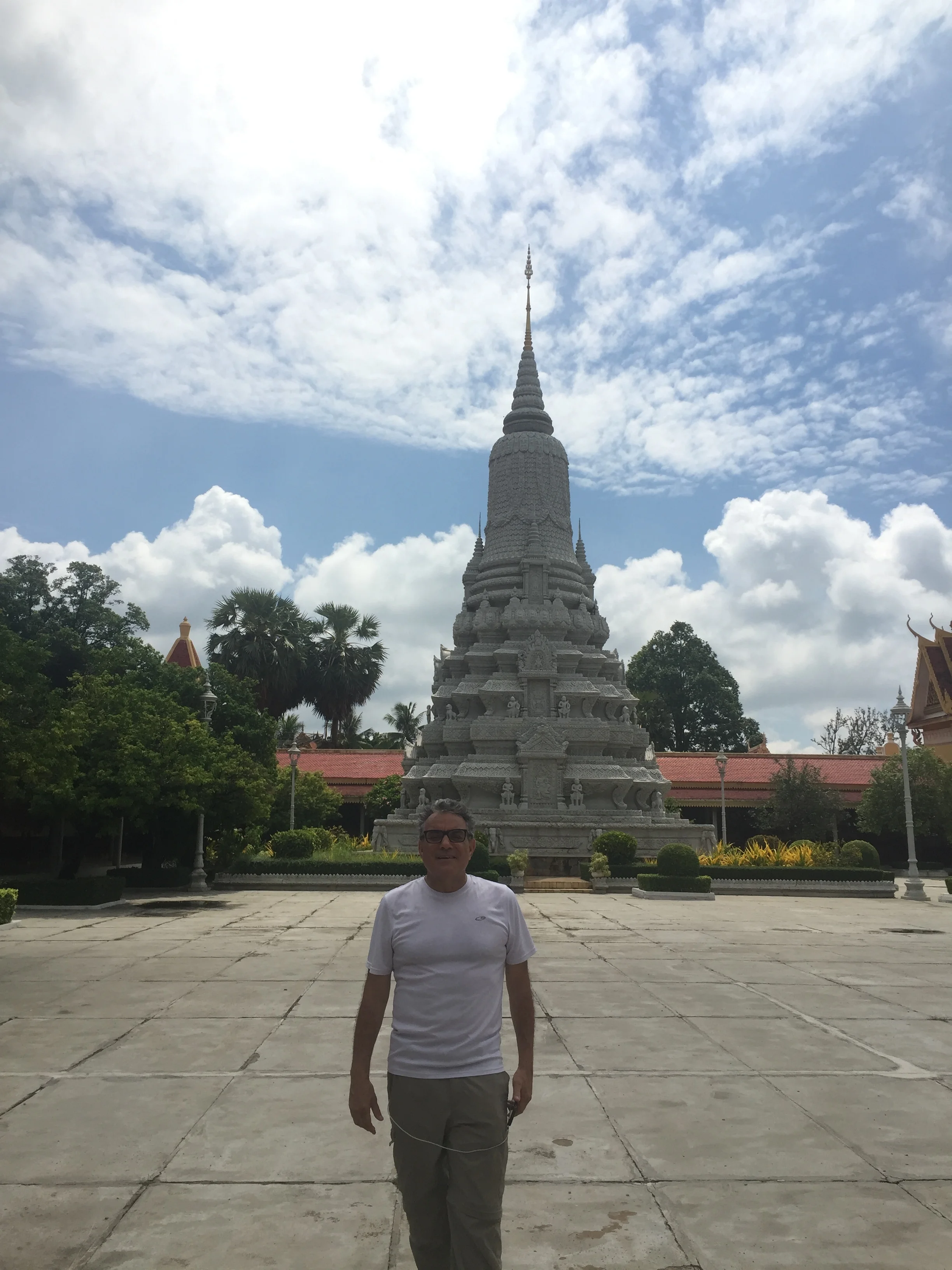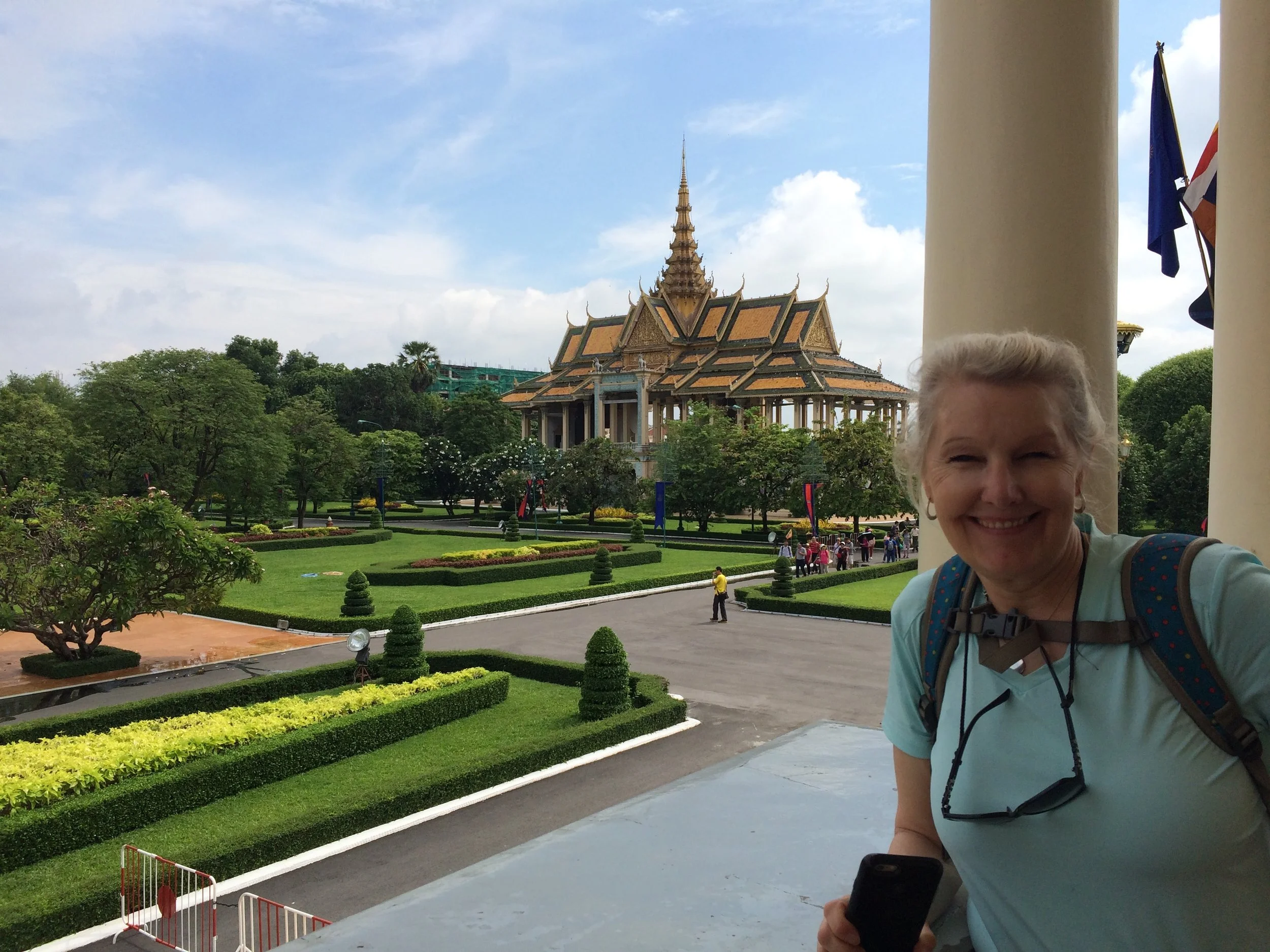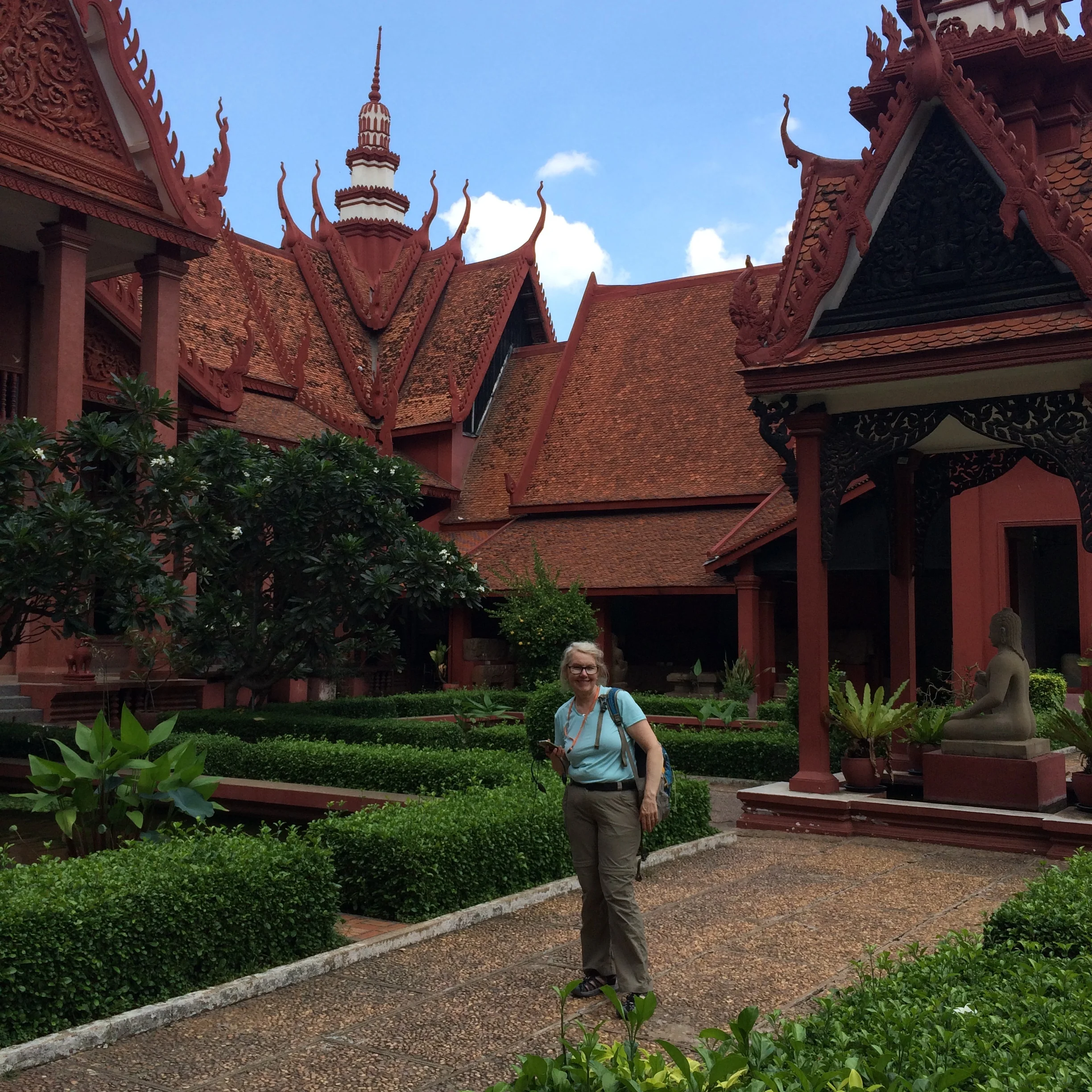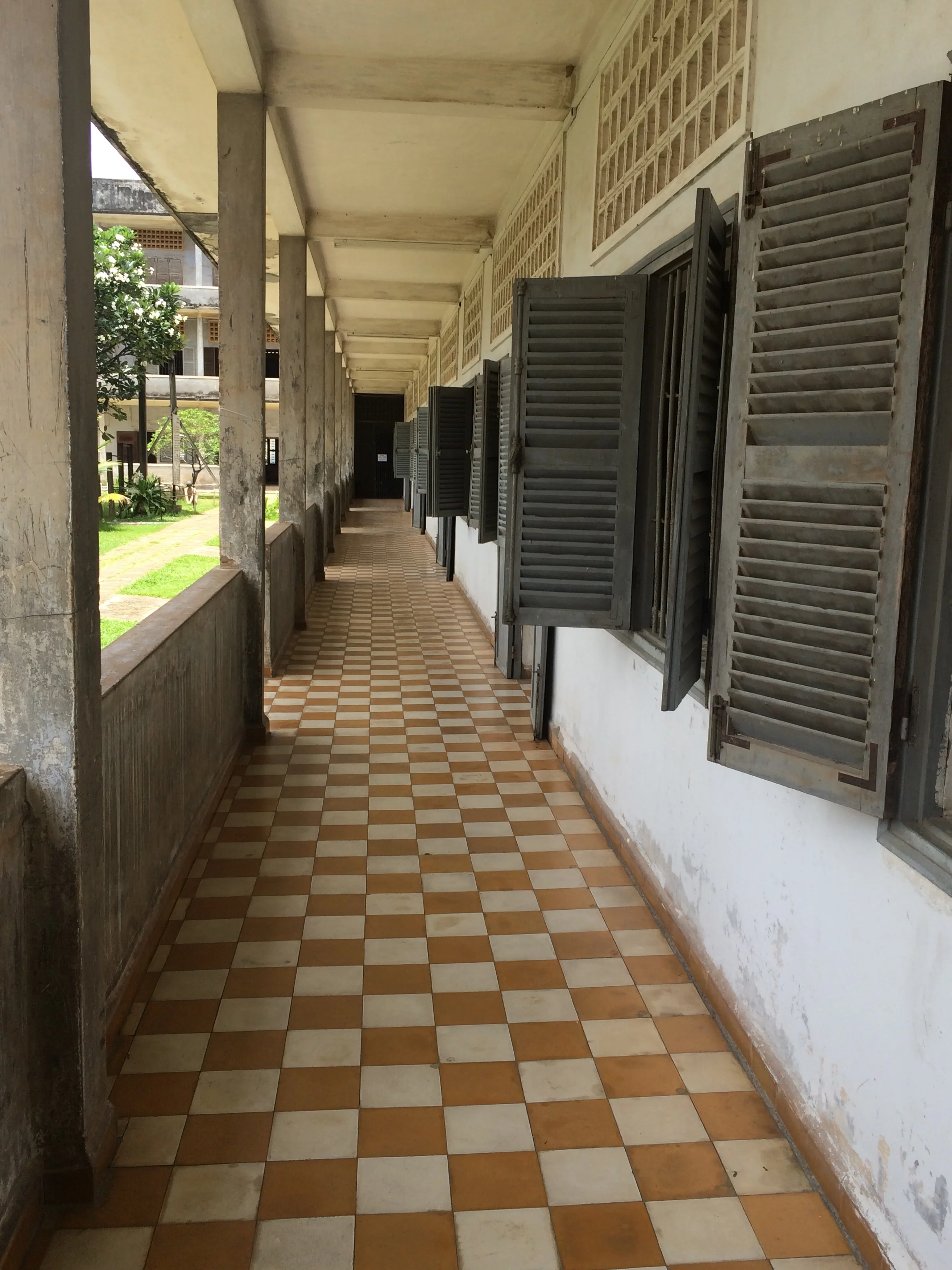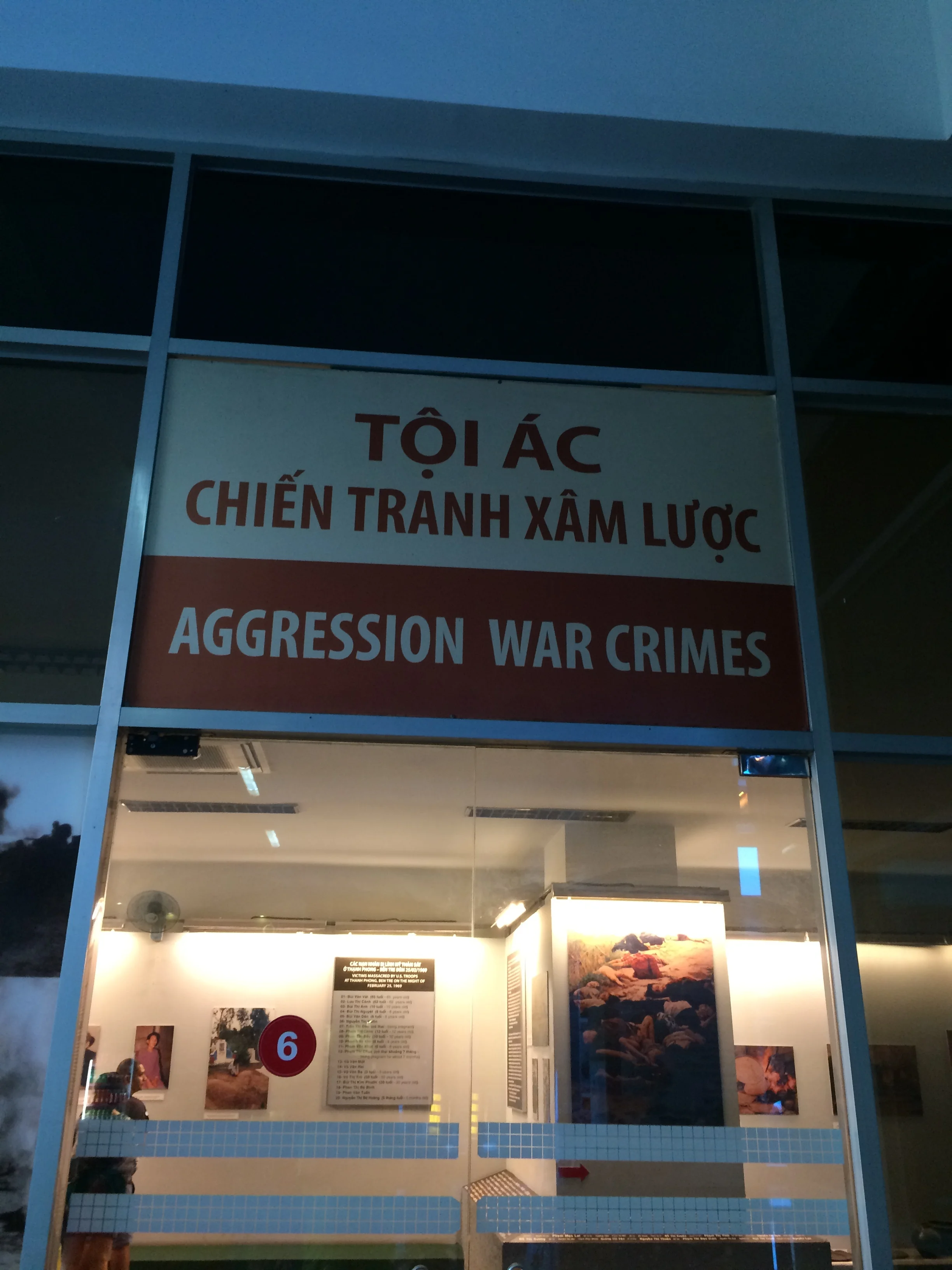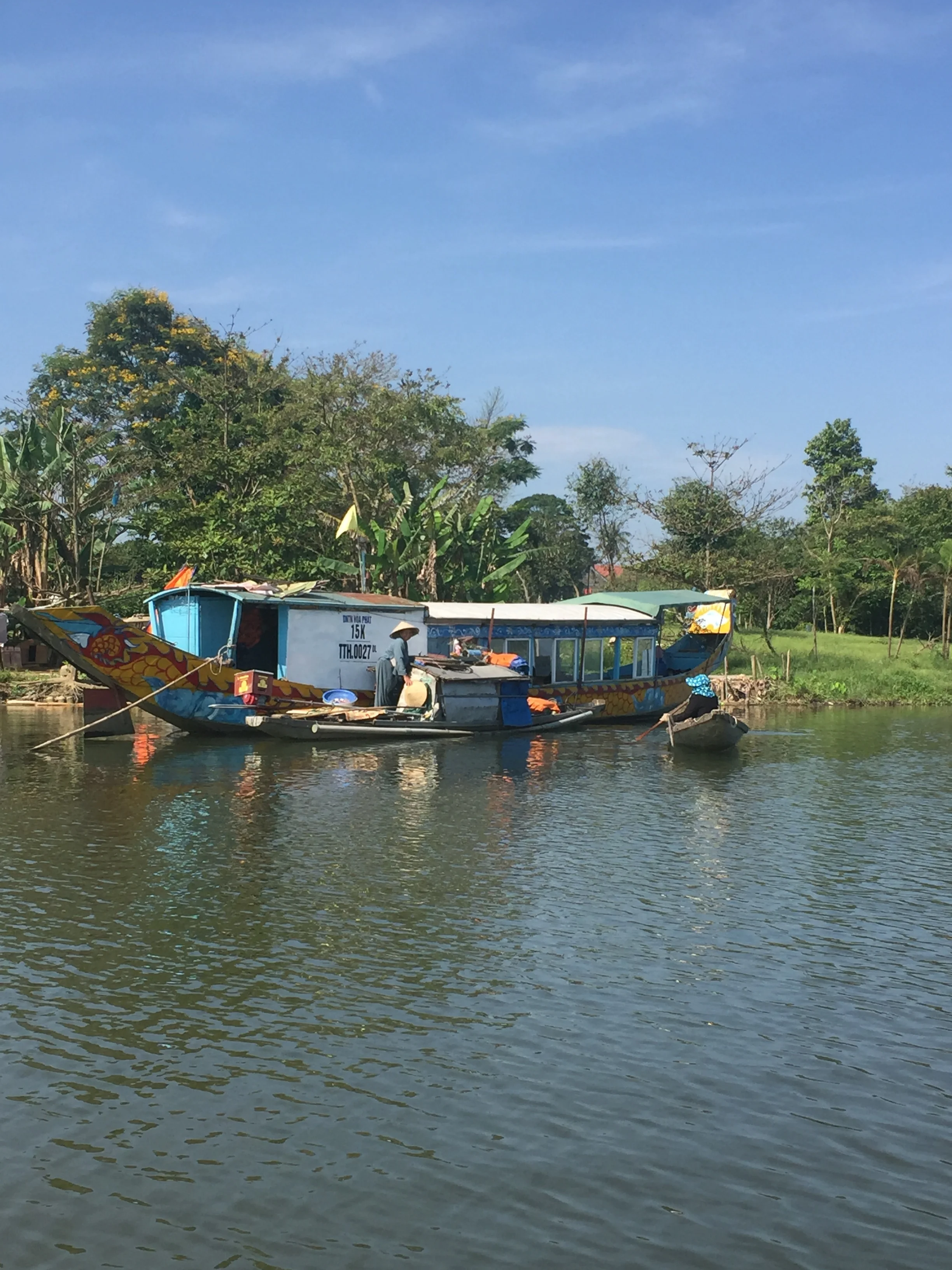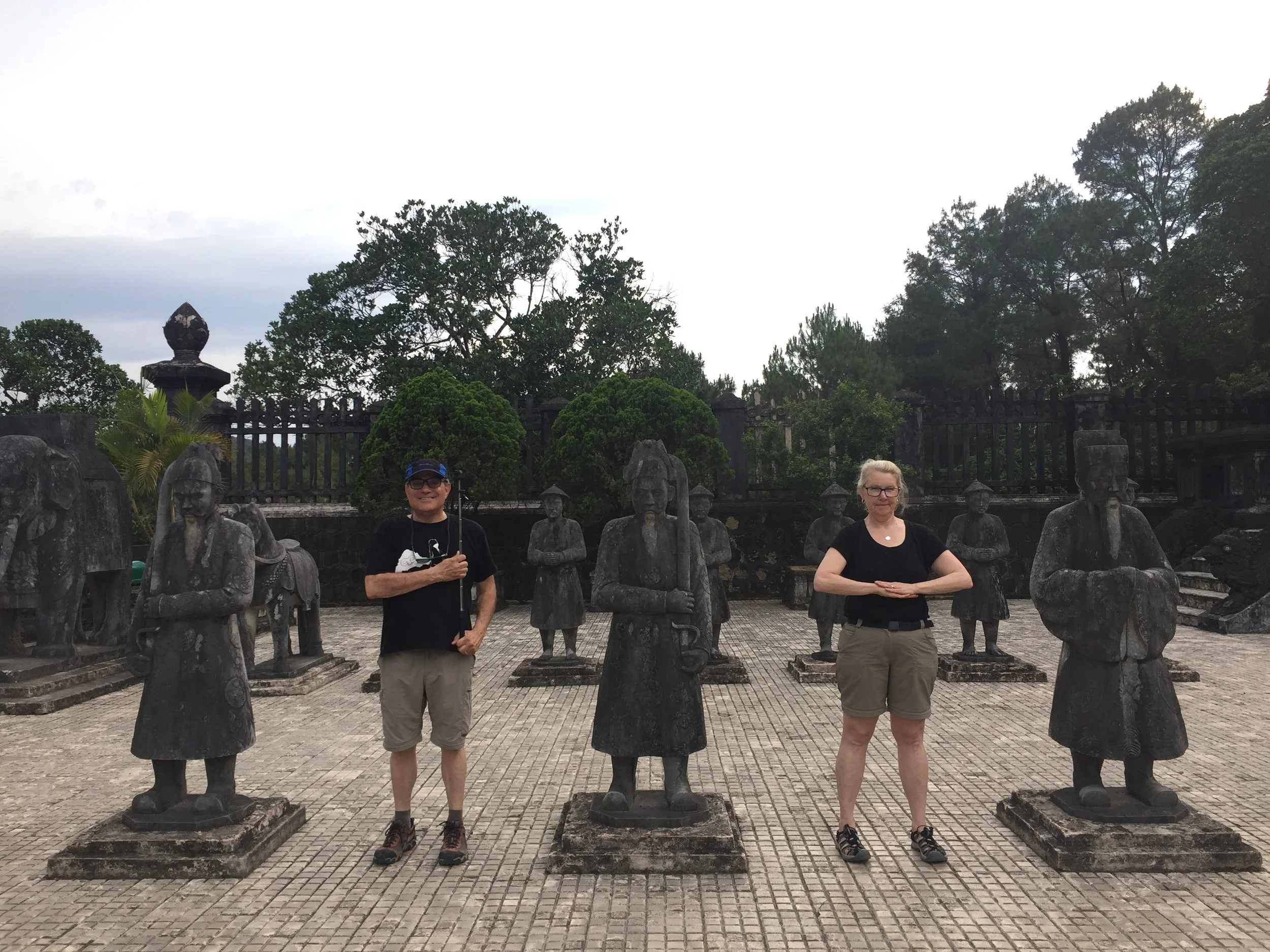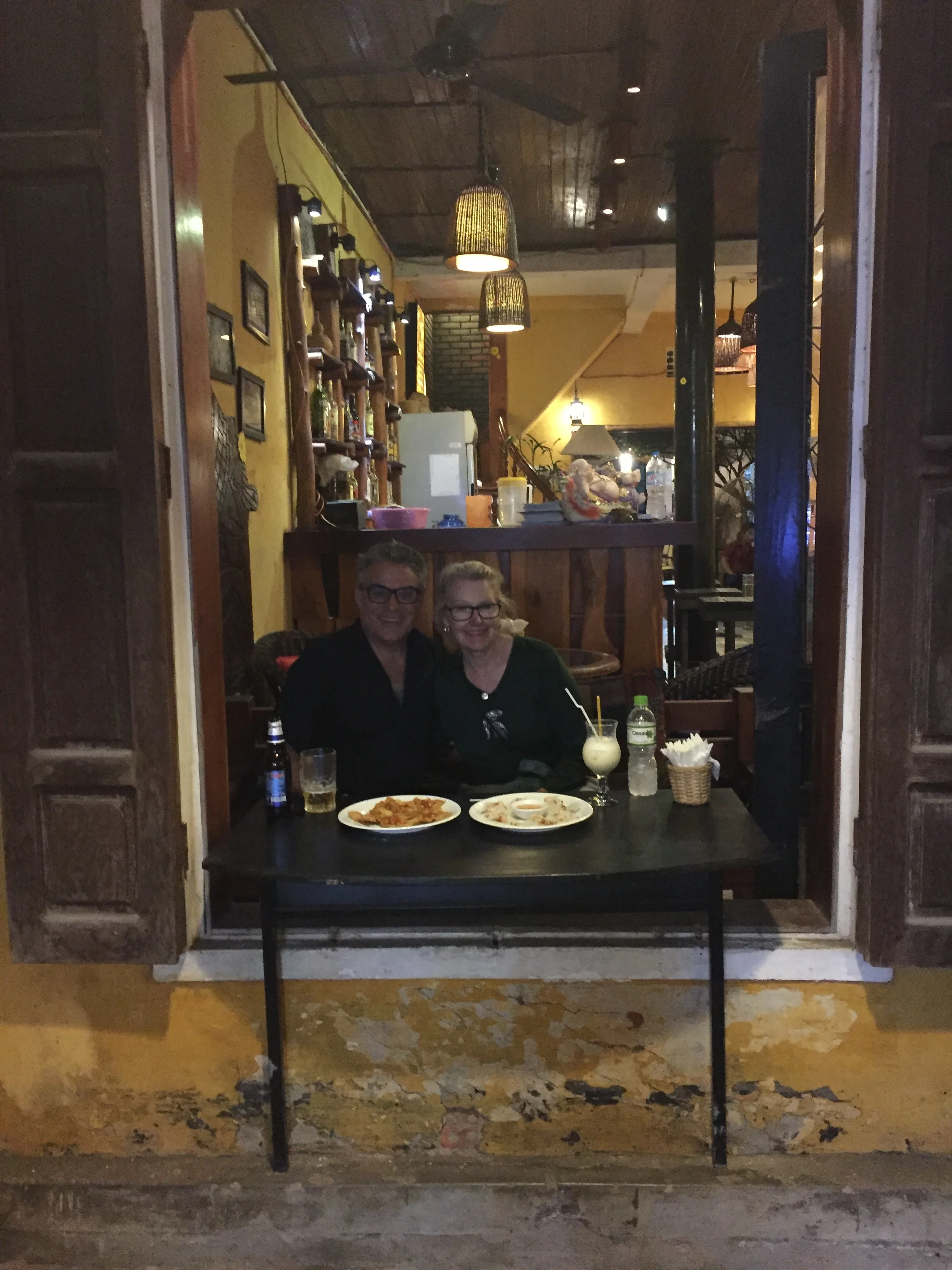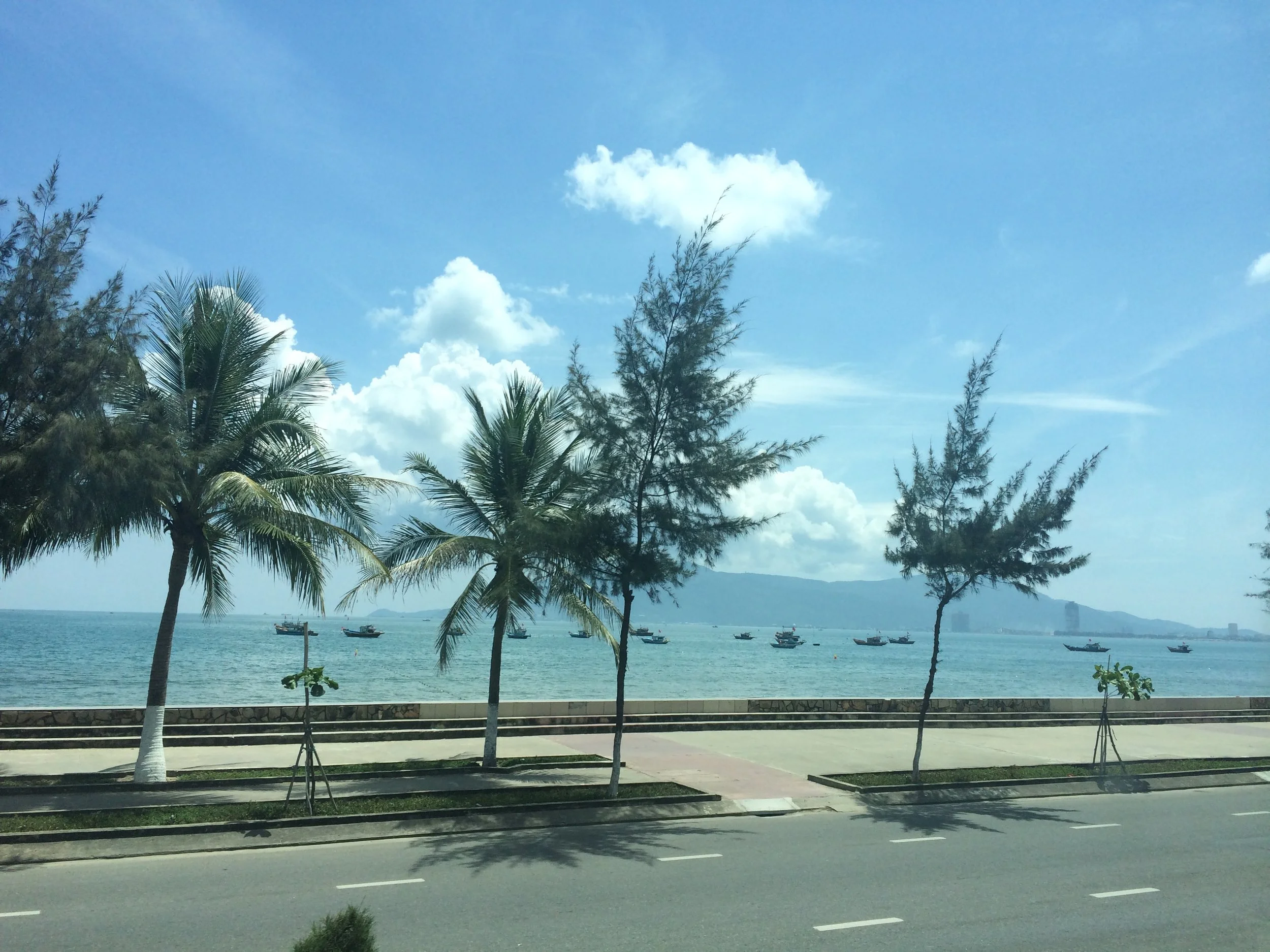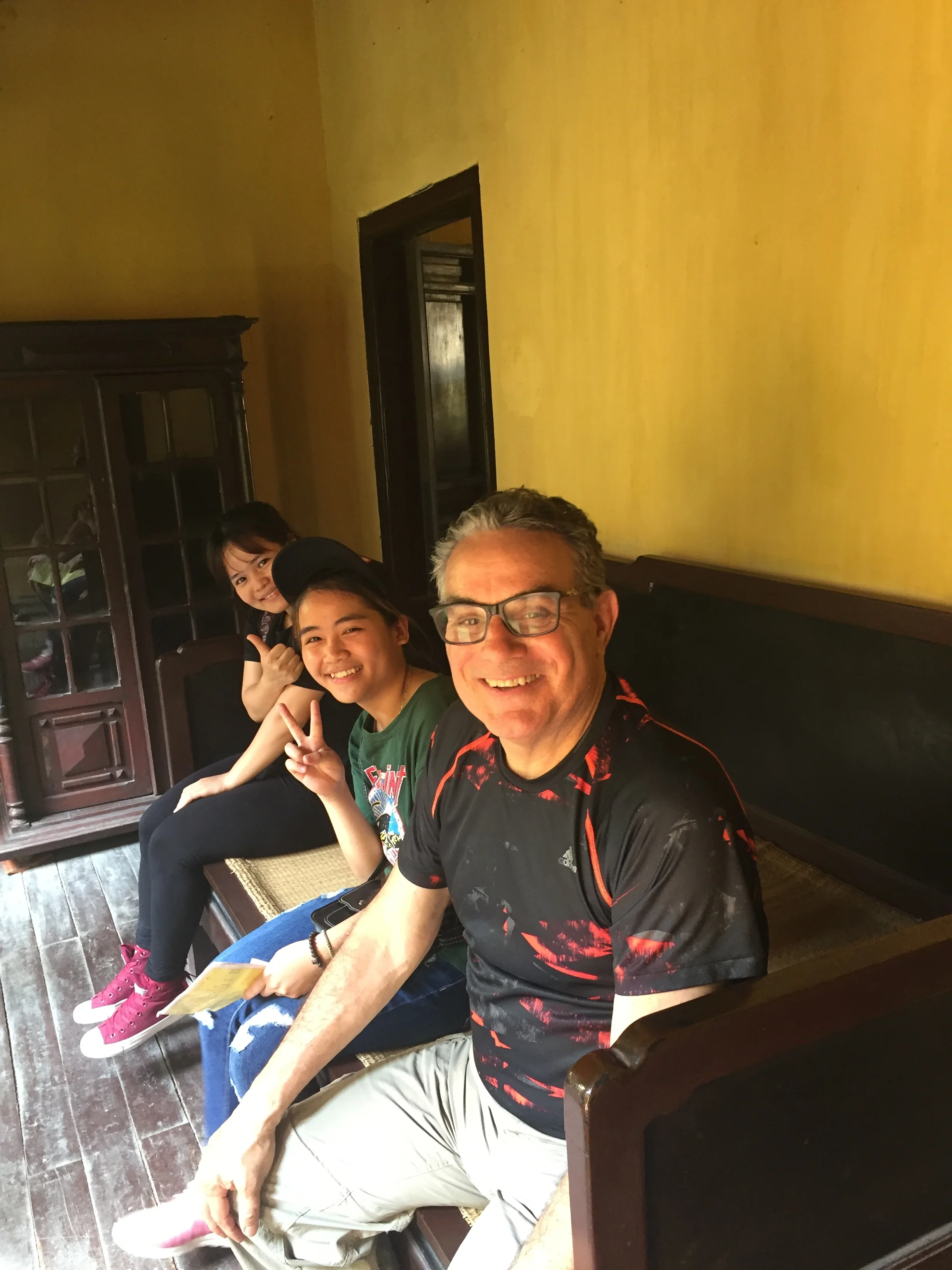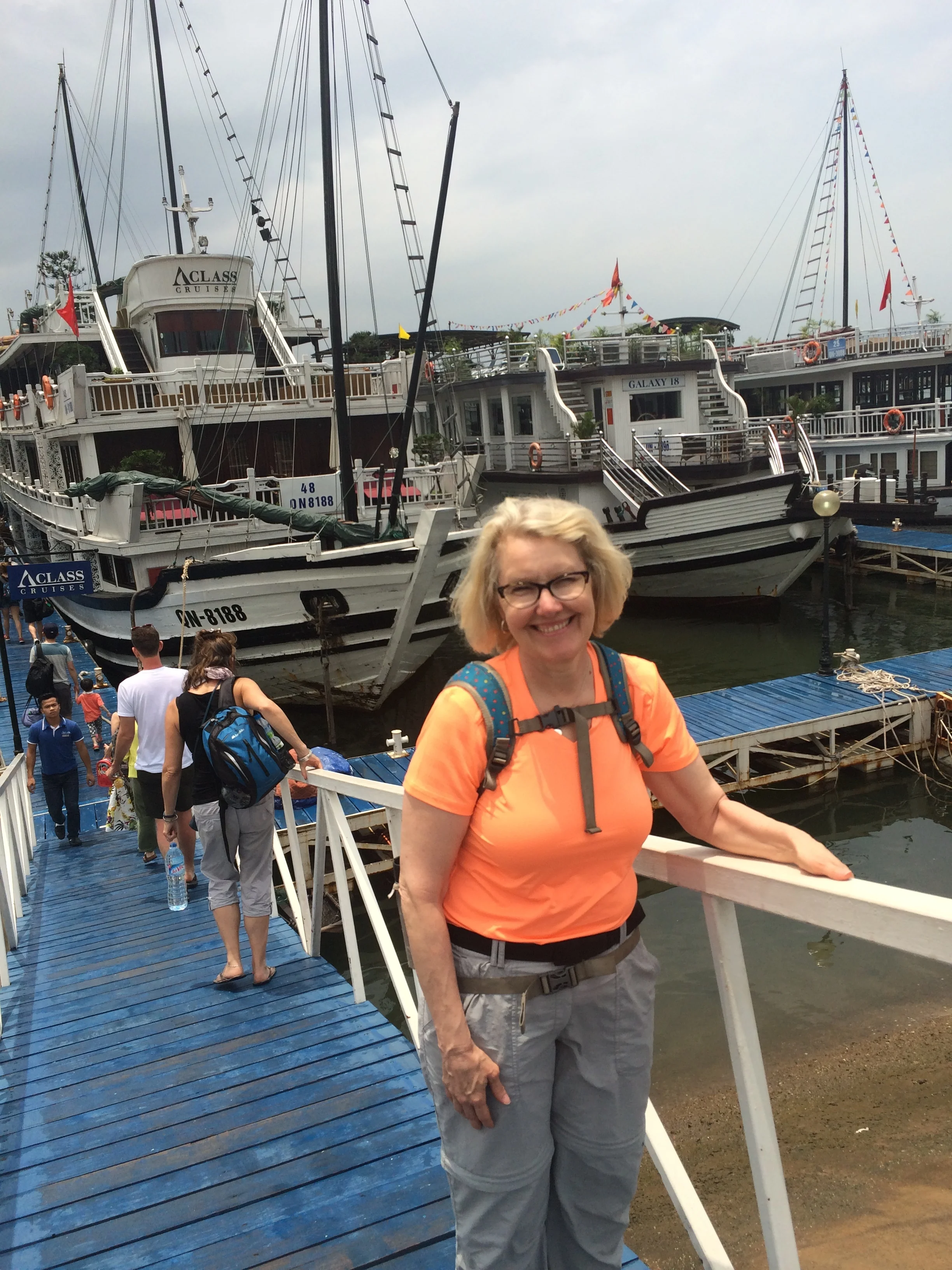Our hotel with pool
This town is located Northwest of Siem Reap and is considered more rural but with a population of 140,000. We booked another hotel with a pool—love afternoon cool-downs and hung out at the pool all afternoon.. That evening we enjoyed the Battambang Circus. This is the training ground for future stars, but they already show professionalism. The traditional Cambodian dance routines were well done with the right amount of grace, strength, and comedic relief expressed by the group of eight dressed in colorful garb. Next the clowns and gymnasts went through strenuous routines of high flying, balancing, and acrobatics. They were all very good and received much applause from the mostly westerner audience.
Flying without a harness
The next day we enjoyed the countryside excursions. Yes, there are small ancient temple which are interesting in there own right, such as “Ek Phnom Temple” (100 years older than Angkor Wat), but the add-on of the Craft Shop Tour suggested by our tuk-tuk driver Mr. Blue, made the longish drive even more worthwhile. See the photos of the temples below
Our driver took us to 3 village locations, starting with a rice wine maker, really it is "moonshine" and we loved it. The of rice wine which is about 40-50 proof and can be purchased straight up, or with fruit flavors, or even with cobra snake juices (for those with sore backs!). No purchase by us, but drinking the free shots of booze offered was appreciated. See photos below of the Cobra snake, the distillery and the owner/salesman.
Next we stopped to watch a rural production line of 2 people make/cook “circular rice paper” for spring rolls over a charcoal stove. The process has 3-4 steps. Stoke the fire which heats the circular pan, spoon the rice mixture onto the pan and spread it in a circular pattern; let the batter heat for a matter of seconds and place the cooked rice circle on to a round bamboo rod; remove the rod from its holder and roll the rice paper onto a large mesh drying sheet. The mesh sheet holds 80 pieces. Our guide told us the family can make 1,000 per day and get around $100 for it. The girls making it do not go to school and stay with the family business until they marry. While they worked we drank natural milk out of a fresh coconut; once the milk was sucked up, they split the coconut open so we could spoon out the soft coconut meat. Really good in a natural way; but not sweet like processed coconut for candies.
The third craft shop was at an outdoor bakery of sorts with about 10 employees cutting, mixing, baking and wrapping prepared coconut cakes about 2 inches high and 8 inches square in a variety of colors. This was a manual factory, maybe with some wholesale. We did not taste any coconut cake, but the size of this operation in the open under a corrugated tin roof was impressive.
We also stopped at another “ Killing Field” at a temple called “ Wat Samrong Kuong” which had been converted into a small prison and torture center of the Khmer Rouge. There are 300 killing fields in Cambodia and by the end of this day we will have experienced 3 sites. There is a memorial here with the display of human bones, but even more striking is the artistic relief sculptures surrounding the base of the memorial. Here, the brutality is graphically depicted; very depressing.
The murals of the killing field monument
We then went to the mountain top Temple of Phnom Sampov. We walked up a very steep road to get to the top where this beautiful Buddhist temple sits overlooking miles and miles of farmlands in the surrounding plain and the small village below. There are several structures including Pagodas, all connected by tree lined terraces which are populated by swinging monkeys. That is the good part.
On the way to the top there are some pathways to large cave openings. Here, the Khmer Rouge strike again. Instead of the usual memorial, a rather graphic display of torture techniques is portrayed. In the enormous cave, there are pits and walkways, now a small Buddhist alter, and a cage with human bones. Look up and you can see an opening in the cave ceiling where apparently victims where pushed and dropped to their death. The Khmer Rouge were pure evil—they tortured people for false confessions knowing they would be killing them no matter what. It is a tragic history of this country which has been repeated time and again by foreign invaders and domestic perpetrators.
Finally, we walked down from the hilltop back to the small one street village. Here was another cave opening some 50 feet above the street, and it is about 100 feet in length. There is a buzzing sound coming from the cave. As sunset approaches, at about 5:30 PM, the buzz increases and then thousands of “Wrinkled-lip Bats” emergein groups from the cave. The sky becomes blackened as the bats fly to the rural fields in the area. It looks like each group has a leader and they head in pre-determined directions. After watching for about ½ hour we drive home in the tuk-tuk watching the various groups flying on the wind currents incredibly high and far. It was really a great experience for our last day in Battambang. Tomorrow, we take a bus to the border of Thailand, cross over, and then bus to Bangkok, Thailand. We really have enjoyed Cambodia; the people are very friendly, not pushy, have reasonable english skills, almost all drive motorcycles, they are fair dealing, and their history and culture is fascinating.
The nightly flight of the bats
The Black Buddha is the city namesake










